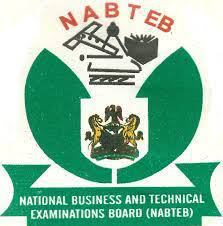2024 WAEC GCE AGRICULTURAL SCIENCE PRACTICAL ANSWERS
*””AGRIC SCIENCE PRACTICAL COMPLETE SOLUTION””* ===================== (1a) The Specimen B is a Castration device which employs a large clamp designed to break the blood vessels supplying The testicles. Once the blood supply to the testicles is lost testicular necrosis the testicles shrink, Soften and Castration is said to have occured. (1b) Specimen C: (i) used for livestock Identification (ii) used for Monitoring livestock behaviour Specimen D (i) for fastening nuts & bolts (ii) for loosening nuts and bolts Specimen E (i) For lightening (ii) For generating Especially heat poultry (1c) Specimen B (i)elastrator (ii) surgical blade Specimen E (i) electric bulb (ii)candle light ======================================= (2ai) F – Granular in nature G – It has bulk density H – Dry matter content (2aii) (PICK ANY ONE) (i) They are used in enriching the soil with nutrients (ii) They are used increasing soil fertility to ensure good vegetative growth that results in high crop production. (2aiii) (i) Broadcasting (ii) Placement (iii) Foliar application (2b) Choose a well-drained area before digging pits. Then dig two pits. Collect plant residues such as grass, cleared bushes, weeds from your farm, animal waste,etc. Ensure the plant residues are in small sizes to speed up the decomposition process. Use one pit to collect animal waste and the other pit to mix and decompose animal waste with the other waste materials. Mix the plant residues with animal waste like waste from poultry, pigs, goats, cattle and donkeys, thoroughly and leave it to decompose. Add water to make mixing easier and pave way for faster decomposition. Leave them to decompose in the second pit for about a month then remove the compost manure from the pit to a heap where it decomposes further and dries up for two weeks depending on the weather. Keep on rolling the compost as it integrates oxygen into the pit and breaks up clumps. (2c) F – Clean up excess fertilizer on your sidewalk or driveway G – Ensure it is properly added to the soil H – Ensure hand gloves are worn ======================================= (3) (3a) I – Arachis Hypogea. J – Gossypium Spp. K – Elaeis Guineensis. L – Hevea Braziliensis (3b). I – Legume J – Fibra K – Fat & Oil L – Polymer (3c) i. Cleaning ii. Dehulling iii. Cooking iv. Pressing v. Filtration (3d). i. Vascular wilt ii. Spear rot iii. Red ring disease ======================================= (4). M: Birds N: Fowls O: Ruminants (4b). N- it has thick muscular wall and may contain stones O- Composed of several sacs. P- It is the region where most digestion of food takes place. Q- It is a large, meaty organ that sits on the right side of the belly. (4c). N- Gizzard (Pick any two(2) i. It modified for grinding food ii. Its located between sac like and the intestine iii. It has a thick muscle wall and may contain small stones or gastroliths, in acid function in mechanical breakdowns of seeds and other food. O – Rumen (Pick any two(2) i. It allows mixing and churning of digesta ii. It acts as a storage or holding vat for food. (Adipex) iii. Breakdown of cellulose takes place in the rumen. P – Small intestine (Pick any two(2) i. Absorb digested food completely ii. It secretes intestinal juice. iii. Churn and mix ingested food, making it into chyme Q -Liver (Pick any two(2) i. Enzymes activation. ii. Bile production and excretion iii. Storage of glycogen, vitamins and minerals. *COMPLETED*Categories: WAEC Syllabus Past Questions and Answers
0 Responses




